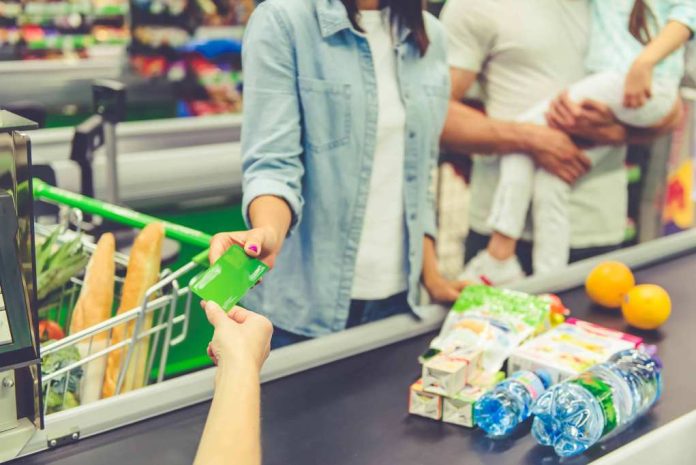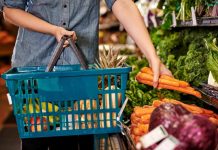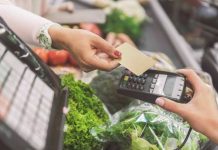
The pandemic has impacted people in ways that they likely didn’t expect. That is why people can find themselves dealing with financial hardship. When people deal with financial hardship, they may be forced to make tough decisions like choosing between properly feeding their children or paying rent. That is why the government wanted to provide extra assistance to those in need. One of the ways they did this was by providing additional assistance to qualifying individuals and qualifying Supplemental Nutrition Assistance Program (SNAP) recipients.
What is the Supplemental Nutrition Assistance Program (SNAP)?
Before learning about how the government can provide extra assistance to qualifying families, you will want to have a clear understanding of SNAP. However, if you want to skip down to the extra benefits, it’s just down below. SNAP is a program that can provide support to families with the cost of groceries. They do this by providing recipients with an Electronic Benefit Transfer (EBT) card. This card will receive funds every month towards the cost of groceries. The amount of funds varies by person and the EBT card can only be used at stores that accept it as a form of payment.
How to Apply for SNAP?
If you want to submit an application you will first want to contact your state agency. They will be able to help you understand your eligibility for this program. When applying, the application is free so there is no reason to hold off! It is important to note that not everyone is eligible to receive assistance. Typically a majority of college students, some legal immigrants, and individuals on strike won’t be able to benefit from this assistance opportunity.
What Can SNAP Purchase?
When people say groceries, that doesn’t mean anything that you may find at a store that accepts EBT as a form of payment. Instead it is only on eligible items like:
- Bread
- Cereal
- Dairy products
- Fish
- Fruits
- Meat
- Non-alcoholic beverages
- Poultry
- Seeds and/or plants that produce food for the household to eat
- Snack foods
- Vegetables
- Other foods similar to the ones mentioned above
Some foods that would not be eligible to buy with SNAP funds includes:
- Alcoholic beverages like beer, wine, liquor
- Live animals (except shellfish, fish removed from water, and animals slaughtered before store pick-up)
- Medicines
- Non-food items
- Supplements
- Tobacco products like cigarettes
- Vitamins
What is Coronavirus Pandemic Electronic Benefit Transfer (P-EBT)?
Now let’s get into what it means to get extra assistance. As a result of the pandemic, the government created more assistance options to help those in need. This piece of legislation gives the Secretary of Agriculture the right to approve states that have plans to provide this form of assistance.
P-EBT can help by giving qualifying children in school the ability to get temporary emergency nutrition benefits. These nutrition benefits would be placed on an EBT card just like with SNAP. These EBT cards can go towards buying food. Those that are likely eligible for this program include:
- Children that get free meals under the National School Lunch Act if their schools were not open or operating with reduced hours or attendance for a minimum of 5 consecutive days
- Children that get reduced-price meals under the National School Lunch Act if their schools were not open or operating with reduced hours or attendance for a minimum of 5 consecutive days
- Kids that are a part of a household that receives benefits from SNAP as long as the covered child care facility is closed
- Kids that are a part of a household that receives benefits from SNAP as long as the covered child care facility is operating with reduced hours or attendance
- Children that are a part of a household that receives benefits from SNAP as long as they live in the area of schools that are closed
- Children that are a part of a household that receives benefits from SNAP as long as they live in the area of schools that have reduced hours or attendance
What States Offer This Assistance Option?
It’s important to note this isn’t a nationwide program and not everyone is eligible. The aim here is to provide children with nutrition benefits. States that participate in this program for the school year of 2022 to 2023 include:
- Alabama
- Minnesota
- New Jersey
- North Carolina
- Ohio
- Rhode Island
- Vermont
- Wisconsin
The benefits will vary by state. That is why it is important to confirm with your state agency when reviewing what benefits you can get!
What is Summer P-EBT?
On May 9th, 2022, the USDA made an important announcement regarding the P-EBT program. Initially, P-EBT was designed to assist students during the 2021 – 2022 school year. However, due to the ongoing challenges posed by the COVID-19 pandemic, the USDA extended the benefits into the summer of 2022 and the summer of 2023. This program aims to support school children who are eligible to receive reduced-price or free meals during the academic year.
How Long is the Summer Period Covered?
The Families First Coronavirus Response Act (FFCRA) only covers the summer period that will not be more than 90 calendar days following a school year. During the time of a public health emergency declaration. That means the number of P-EBT benefit days would be the same number as the amount of weekdays during the covered summer period.
What is the National School Lunch Act?
When talking about eligibility for P-EBT, the National School Lunch Act was brought up. It is important that you understand what this act is. That’s because it can provide assistance through a variety of different programs like:
- National School Lunch Program (NSLP)
- School Breakfast Program (SBP)
- Special Milk Program (SMP)
This act was a piece of legislation that was passed back in 1946. It was a response to American men that claimed they were denied the ability to serve in World War II due to diet-related health issues.
National School Lunch Program (NSLP)
The meal assistance option can help public schools, nonprofit private schools, and even residential child care institutions. Through this program, eligible children can receive nutritionally balanced lunches for free (or for a low-cost) for every day of school.
School Breakfast Program (SBP)
Another helpful program is SBP. This assistance opportunity gives reimbursement to states so that they can operate nonprofit breakfast programs in both schools and residential child care institutions. While the program is given at a federal level, it is actually state education agencies that receive the funds and administer them.
Special Milk Program (SMP)
Milk plays an important part in the development of children. It provides nutrients like calcium, Vitamin A, etc. That’s why this program aims to give milk to qualifying children in both schools and child care institutions that do not participate in any other federal meal service programs. This program would reimburse the school for the milk that they serve. However, even those schools benefiting from other federal meal service programs may still qualify if they are in NSLP or SBP.
Schools that benefit from these programs would be able to only give milk to children that are in half-day pre-K or kindergarten programs that don’t provide access to children for school meal programs.
Bottom Line
Since the pandemic resulted in a lot of financial hardship for Americans, the government created programs in hopes to help. One of the programs they provide is P-EBT. This pandemic EBT assistance can provide eligible children with funds on an EBT card to go towards buying food. However, not every state participates in this assistance option. That is why you should check with your state agency to see if this is something that you may be able to benefit from! It may be able to help you get hundreds of dollars in additional assistance.




























